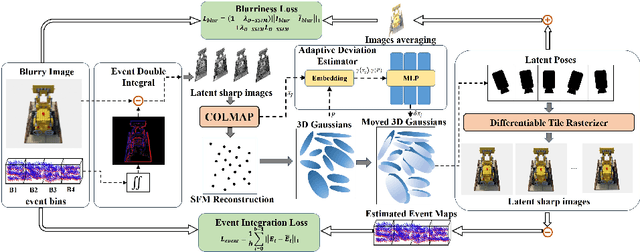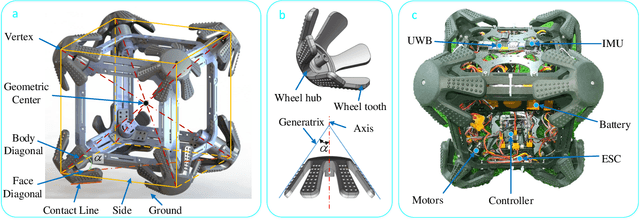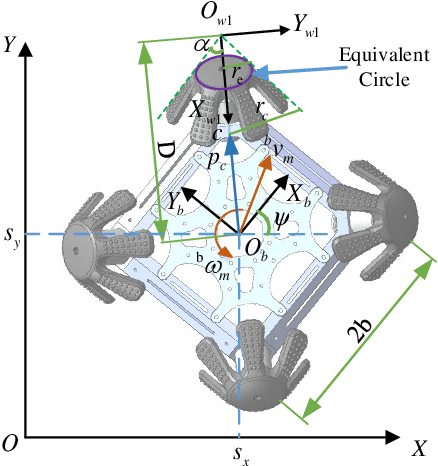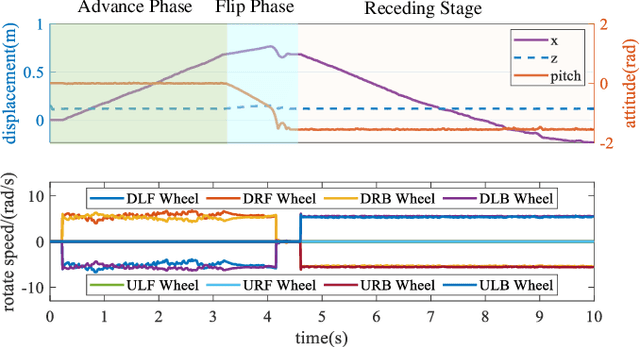Yuchen Weng
EaDeblur-GS: Event assisted 3D Deblur Reconstruction with Gaussian Splatting
Jul 18, 2024



Abstract:3D deblurring reconstruction techniques have recently seen significant advancements with the development of Neural Radiance Fields (NeRF) and 3D Gaussian Splatting (3DGS). Although these techniques can recover relatively clear 3D reconstructions from blurry image inputs, they still face limitations in handling severe blurring and complex camera motion. To address these issues, we propose Event-assisted 3D Deblur Reconstruction with Gaussian Splatting (EaDeblur-GS), which integrates event camera data to enhance the robustness of 3DGS against motion blur. By employing an Adaptive Deviation Estimator (ADE) network to estimate Gaussian center deviations and using novel loss functions, EaDeblur-GS achieves sharp 3D reconstructions in real-time, demonstrating performance comparable to state-of-the-art methods.
Design and trajectory tracking control of CuRobot: A Cubic Reversible Robot
Nov 28, 2023



Abstract:In field environments, numerous robots necessitate manual intervention for restoration of functionality post a turnover, resulting in diminished operational efficiency. This study presents an innovative design solution for a reversible omnidirectional mobile robot denoted as CuRobot, featuring a cube structure, thereby facilitating uninterrupted omnidirectional movement even in the event of flipping. The incorporation of eight conical wheels at the cube vertices ensures consistent omnidirectional motion no matter which face of the cube contacts the ground. Additionally, a kinematic model is formulated for CuRobot, accompanied by the development of a trajectory tracking controller utilizing model predictive control. Through simulation experiments, the correlation between trajectory tracking accuracy and the robot's motion direction is examined. Furthermore, the robot's proficiency in omnidirectional mobility and sustained movement post-flipping is substantiated via both simulation and prototype experiments. This design reduces the inefficiencies associated with manual intervention, thereby increasing the operational robustness of robots in field environments.
 Add to Chrome
Add to Chrome Add to Firefox
Add to Firefox Add to Edge
Add to Edge